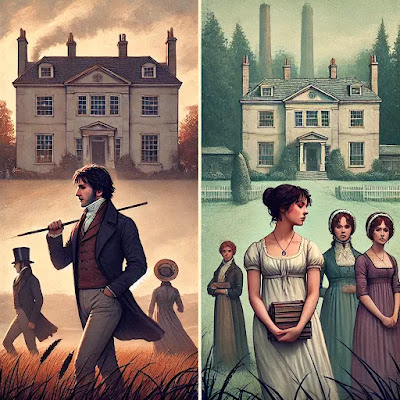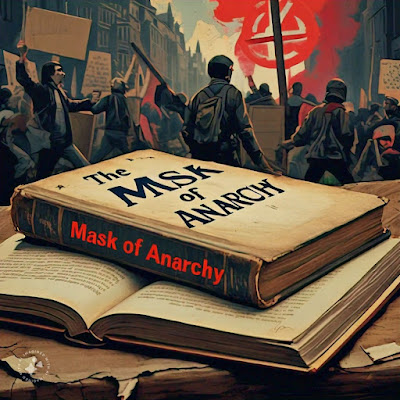Exploring the Depths of Mary Shelley's Frankenstein: A Comprehensive Analysis
Published in 1818, Frankenstein is a novel by Mary Shelley. For two and a half centuries now, it has been resonating with audiences worldwide. Its themes -ambition, creation, and the concerns associated with scientific discovery- remain as valid today. Going beyond its role in cautioning us from unchecked ambition, the novel tests our very view of monstrosity, humanity, and responsibility. We're going to indulge in some of the most important questions that arise in Shelley's novel and have been interpreted visually on the screen, like the adaptation directed by Kenneth Branagh in 1994.
1. Major Differences Between the Movie and the Novel Frankenstein
Even though Kenneth Branagh's Frankenstein, then, is keen on adhering to the wording of the original book, notable divergences set up specifically in order to make this very special film are pretty telling and alter experience of the story.
Characterization
The characters are more emotionally complex than in the book. For instance, Victor Frankenstein is shown to be a person profoundly in conflict, obscured by guilt and isolation, an archetype of the tragic hero, often whose hubris leads to his downfall, his personal suffering sometimes being the excess over the ramifications of his acts: Branagh's version heightens Victor's emotional turmoil and ambition, making his descent into despair immediate and relating.
A more emotionally expressive creature, played by Robert De Niro, is put forward in the film. While Shelley portrays the creature as eloquent and philosophical that expounds on existential questions in the novel, in Branagh's film, it has zeroed in more on his physicality and raw emotion- a portrayal fitting to the tensions of alienation and finding identity that are contemporary themes.
Themes and Tone
The novel written by Shelley is the one on moral effects brought along by science discovery. It unravels the consequences of playing God. The mood often turns out to be somber and reflective, and thus the readers can reflect upon Victor's decisions. On the other hand, Branagh's adaptation is more or less laden with horror and emotional drama it depicts dramatic visual effects along with intense sequences that tend to emphasize the monstrousness of both Victor and his creation. The movie sacrifices subtle and interesting questions about philosophy for visceral experiences.
Romantic Elements
Romantic relationships have also been depicted in stark contrast: In the novel, the Elizabeth relationship forms a background to Victor's scientific undertakings. Branagh, however, expands this subplot to make Elizabeth a very important figure in Victor's life. The relationship with Elizabeth gives much more emotional depth to the story, thus the tragic loss at the end in relation to Victor.
Ending and Resolution
The endings of the book and the film have to be drastically different. Shelley ends it rather somber and thoughtful, by having the end brought about through suicide committed by Victor crazed with obsession, and the creature, repentant, determined to end his own misery. Branagh's film ends it more as an action-filled movie, focusing on the final duel between creator and creation where horror at what Victor's actions had wrought is highlighted.
2. Who Do You Think Is a Real Monster?
It is around who the real monster is that the story of Frankenstein remains central. Is it the creature, who commits violence, or Victor, whose ambition leads to suffering?
In many ways, Victor was a monster. He committed hubris and negligence when he offered to produce life but then deserted it, and thus his creature was exposed to a world of people who spurned it. On the other hand, however, the creature embodies both possible good and evil. He is initially innocent and then full of aspirations for companionship but, due to the rejection by society, he turns vengeful. This makes one question if societal attitudes really affect or kill "others."
3. Is the Search for Knowledge Dangerous and Destructive?
This is not to mean Mary Shelley portrays the pursuit of knowledge as harmful in itself. It would rather mean that search and use of knowledge could be dangerous. As Victor was passioniously imbued with love and devotion to science, which drove him to unlock its secrets in giving the necklace of life to nature, so did his obsession blind him to the consequences of his acts. His effort was a warning against unchecked ambition of the individual who sought knowledge without ethics.
Shelley underlines the fact that knowledge in itself is not destructive but its misuse is what turns out to be tragic. Had Victor been more thoughtful and responsible, the things he discovered could have served as stepping stones to great things instead of causing destruction.
4. Was Victor Frankenstein's Creature Inherently Evil?
The creature's own nature is a pertinent question in Frankenstein. Initially, he is good and has a desire for friends. Societal rejection and abuse lead him to violence. As he quotes himself, "I was benevolent and good; misery made me a fiend" (Shelley 90). It exemplifies the fact that the creature's acts are not an inherent evil rather a reaction to cruelty faced by it.
It was Victor who had possibly designed the creature's body, but it was societal cruelty that moulded its grotesque nature. This sends the reader back to thinking about how societal attitudes make 'others' behave.
5. Should There Be Limits on Scientific Exploration?
The novel suggests there must be limits to scientific pursuits, primarily on meddling with life or challenging the natural laws of existence. Victor's scientific pursuit in the name of science turns into catastrophe and drives home a crucial question of responsibility that goes along with scientific discovery.
Ethical responsibility is important. Scientists have the right to think whether their work might perhaps hurt somebody or disrupt the balance of nature. Victor fails to think about the consequences of his experiment, and a lot of suffering occurs. Knowledge should not be sought solely for one's ambition; it should have an insight into the long-term results and responsibility for what is created.
Conclusion
Through Mary Shelley's Frankenstein, the deep questions of humanity, knowledge, and creation consequences all come through with very vivid exploration; it continues to resonate for centuries. This novel and its myriad adaptations inspire us to reflect upon and look deeply into the nature of monstrosity, the scope for ethics of scientific exploration, and the responsibilities that arise with the pursuit of knowledge. Deeply, Shelley's work can be rated as a cautionary tale challenging a reader to look inwards and ask questions about morality in the pursuit of knowledge and progress.
This analysis, part of an assignment by Megha Trivedi ma'am as part of a thinking activity, invites readers to engage deeply with the text and consider the broader implications of Shelley's enduring masterpiece. For a visual summary of the novel, consider watching relevant video content that captures its essence.






.webp)















.jfif)

.jpg)